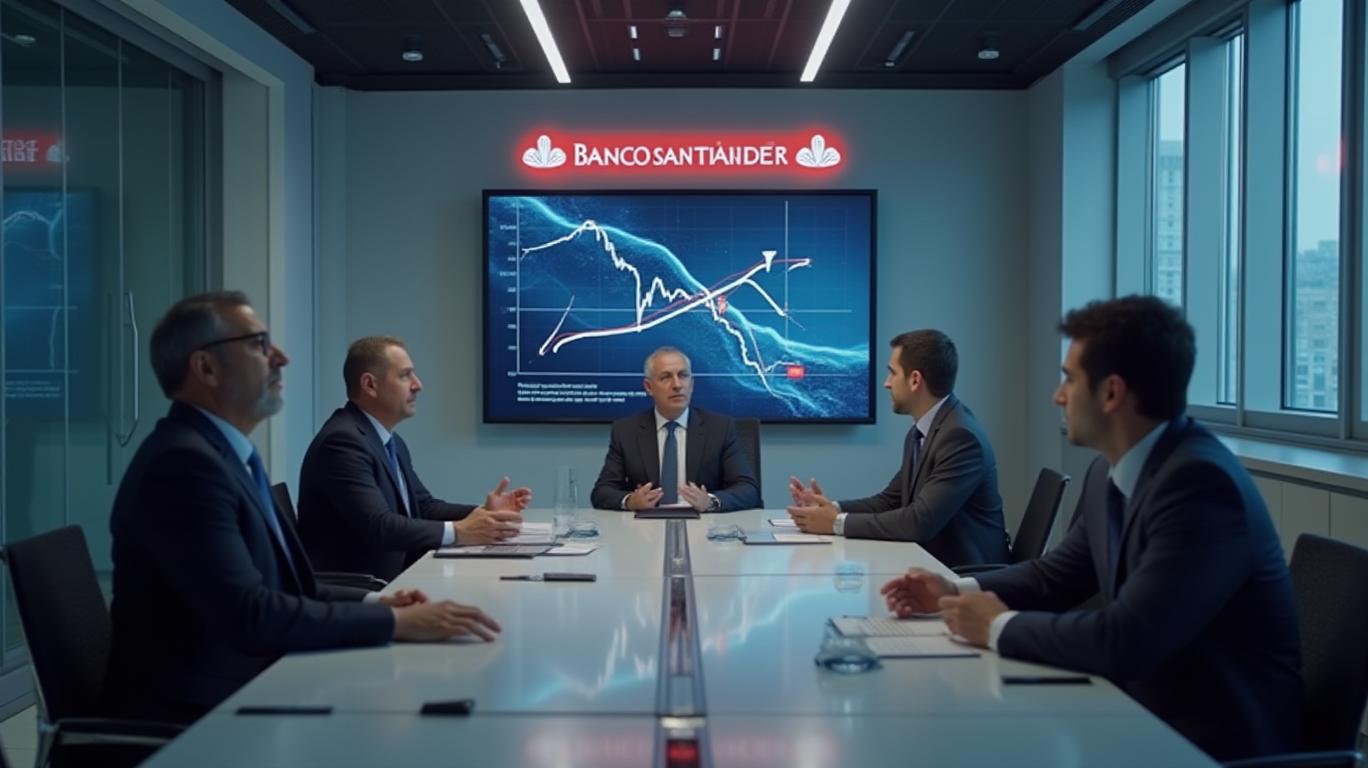Banco Santander Brasil's Q1 2025 Results: Navigating Mixed Signals in a Challenging Market
Banco Santander (Brasil) S.A. (BSBR) delivered a mixed performance in its Q1 2025 earnings report, showcasing resilience in profitability per share while grappling with declining revenue and a cautious market response. The results underscore the complexities facing Brazilian banks amid macroeconomic headwinds and competitive pressures, leaving investors to weigh near-term stability against long-term growth concerns.

Key Highlights: EPS Strength vs. Revenue Decline
The bank reported an earnings per share (EPS) of $0.18, narrowly surpassing the consensus estimate of $0.17. This positive surprise, however, came alongside a 3.6% year-over-year revenue decline, dropping to $2.566 billion from $2.663 billion in Q1 2024. The divergence between EPS growth and revenue contraction suggests cost discipline or strategic adjustments, but it also highlights underlying challenges in top-line expansion.
Analyst sentiment remains cautious, with the consensus estimate for Q2 2025 holding steady at $0.17—a sign that investors are awaiting clearer signs of stabilization. Notably, one analyst downgraded their forecast ahead of the report, reflecting skepticism about the bank’s ability to sustain momentum.
Market Reaction and Valuation Metrics
The stock price fell 3.0% in the days following the earnings announcement, underperforming the broader market (as the S&P 500 ETF rose 0.2% over the same period). This reaction underscores investor wariness about the revenue slide and the bank’s ability to navigate Brazil’s economic slowdown.
Valuation metrics paint a nuanced picture. Banco Santander Brasil’s trailing P/E ratio of 15.8 exceeds the industry median of 12.6, suggesting the market still assigns a premium to its earnings stability. However, the forward P/E of 6.4—based on current-year estimates—hints at skepticism about future growth. The disconnect between trailing and forward valuations highlights the tension between short-term resilience and long-term uncertainty.
Peer Comparison and Industry Context
The bank’s Estimate Revisions Grade of 43 (Neutral) contrasts with weaker scores from peers like Credicorp (BAP) and Shinhan Financial Group (SHG). While this places BSBR in the mid-tier of its industry, its Neutral grade reflects a balance between positive EPS surprises and downward revisions in consensus estimates.
Brazil’s banking sector faces unique pressures, including high inflation, elevated borrowing costs, and sluggish consumer demand. These factors likely contributed to BSBR’s revenue decline, as households and businesses tighten spending. The bank’s ability to maintain EPS despite these headwinds signals operational efficiency but also raises questions about its long-term growth engine.
Risks and Opportunities
Investors should monitor two critical areas:
1. Revenue Recovery: A sustained revenue decline could erode profitability over time, even with cost controls.
2. Valuation Alignment: The current premium valuation (trailing P/E) may come under pressure if earnings fail to rebound.
The bank’s trailing 12-month EPS of $0.72 further emphasizes its modest earnings base, which leaves little room for error in an uncertain environment. Meanwhile, the parent company’s global initiatives—such as capital management or shareholder returns—appear absent from BSBR’s strategy, signaling a focus on liquidity preservation.
Conclusion: A Delicate Balance
Banco Santander Brasil’s Q1 results present a paradox: short-term resilience in profitability contrasts with long-term growth questions. While the bank’s ability to beat EPS estimates demonstrates operational agility, the 3.6% revenue drop and muted stock reaction reveal deeper concerns.
The Neutral Estimate Revisions Grade (43) and valuation discrepancies (trailing P/E 15.8 vs. forward P/E 6.4) suggest investors are hedging their bets. The bank’s performance relative to peers—particularly its stronger standing versus BAP and SHG—offers some optimism, but Brazil’s economic climate remains a critical wildcard.
For investors, the decision hinges on whether they believe BSBR can reverse revenue trends or if the current valuation already discounts prolonged stagnation. With a trailing EPS of $0.72 and a Neutral outlook, the stock may appeal to those betting on stabilization but warrant caution for growth-oriented portfolios.
In a sector facing both regional and global uncertainties, Banco Santander Brasil’s path forward depends on its ability to navigate Brazil’s economic challenges while reigniting top-line momentum—a balancing act that will define its investment appeal in the quarters ahead.



_41c5d7291749577840008.jpeg)





